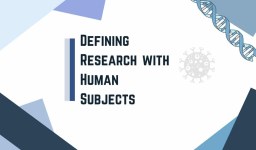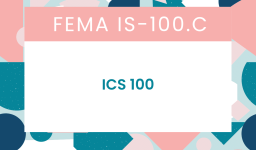The National Response Framework (NRF) is a guide to how the nation responds to all types of disasters and emergencies. Its purpose is to establish a unified and systematic approach to disaster response.
It outlines the principles, roles, and structures that organize how national response is conducted, ensuring that responses are effective and coordinated across all levels of government and among public and private sectors. The NRF defines clear lines of responsibility and authority and delineates the roles of federal, state, local, tribal, and territorial partners.
For detailed information, you can visit the FEMA course page.
Roles and Responsibilities
In the National Response Framework (NRF):
- Government Officials: They are responsible for leading and coordinating emergency response efforts at various levels (federal, state, local, tribal, territorial). They ensure effective resource allocation, policy implementation, and interagency collaboration.
- NGOs and Private Sector: These entities play a crucial role in response activities, offering resources, services, and expertise. Their involvement is vital for effective community response and recovery.
- Community Leaders and Emergency Practitioners: They liaise between the public and response efforts, ensuring community needs are met and that local resources are utilized effectively.
Doctrine and Core Capabilities
The key principles of the NRF doctrine include a unified, collaborative approach, a tiered response strategy, scalable operations, and readiness to act.
The response core capabilities encompass planning, public information and warning, operational coordination, critical transportation, and situational assessment.
These capabilities ensure a comprehensive, effective response to emergencies and disasters.
Community Lifelines
Community Lifelines in the NRF represent key services and functions critical for human health, safety, and economic security. Identification involves recognizing which lifelines are impacted in a disaster, while stabilization focuses on restoring these lifelines to minimize threats to public health and safety.
This approach aids in prioritizing response efforts and resource allocation to ensure the most critical needs are met swiftly and effectively.
FEMA ICS 800.d Answer Examples
| The response protocols and structures described in the National Response Framework align with what doctrine to support a unified approach to response? | National Incident Management System (NIMS) |
| 2. What is the correct function for the National Center for Missing & Exploited Children (NCMEC)? | Facilitates the identification of children and their reunification |
| 3. Which of the following are the benefits of Unified Command? | B. Joint Priorities |
| 4. Operational Coordination is considered a cross cutting capability. In this sense, cross cutting means? | D. Is used in all five of the mission area |
| 5. How the Federal Government aligns resources and delivers core capabilities to reach our shared National Preparedness Goal is described in: | A. The Response Federal Interagency Operational Plan |
| 6. Select one of the three core capabilities that spans all Mission Areas? | C. Operational Coordination |
| 7. The National Response Framework is: | In effect at all times and applicable to all types and sizes of incidents. |
| 8. Select the correct answer to fill in the blank. The National Preparedness System is an integrated set of guidance, concepts, _____, and tools that enable the whole community to meet the National Preparedness Goal. | Processes |
| 9. Which organization serves as the principal operations center for the Department of Homeland Security? | National Operations Center (NOC) |
| 10. The term “response” as used in the National Response Framework includes: | Actions to save lives, protect property and the environment, stabilize communities, and meet basic human needs following an incident. |
| 11. The National Response Framework is: | Always in effect, and elements can be implemented as needed on a flexible, scalable basis to improve response. |
| 12. States request assistance from other states through interstate mutual aid and assistance agreements such as: | Stafford Act |
| 13. What is the relationship between the National Response Framework and the National Incident Management System (NIMS)? | The response protocols and structures described in the National Response Framework align with the NIMS, and all NIMS components support response. |
| 14. Which Response core capability involves ensuring the capacity for timely communications in support of security, situational awareness, and operations by any and all means available, among and between affected communities in the impact area and all response forces? | Operational Communications |
| 15. Why is it important to engage communities in preparedness efforts? | Provide opportunities for sharing information |
| 16. Which partner is often the first to arrive and last to leave the incident site of a disaster? | Local government |
| 17. A basic premise of the National Response Framework is that: | Most incidents begin and end locally and are managed at the local or tribal level. |
| 18. How do coordination structures help organize and measure the whole community’s capabilities? | Facilitate problem solving |
| 19. Which of the following is a community lifeline? | Communications |
| 20. Which of the following sets the vision for preparedness nationwide and identifies core capabilities? | National Preparedness Goal |
| 21. The NRF guiding principles include engaged partnership, tiered response, unity of effort and readiness to act, and ____. | Scalable, flexible, and adaptable operational capabilities |
| 22. Which group of core capabilities spans all seven Community Lifelines ? | Planning- public information and warning- and operational coordination |
| 23. Select the CORRECT statement below. The National Response Framework: | Is an integrated set of guidance, concepts, processes, and tools that enable the whole community to meet the National Preparedness Goal |
| 24. What is the definition for “Mitigation” mission area? | Reduce loss of life and property by lessening the impact of disasters. |
| 25. In order to help form a common operating picture of the incident and secure additional resources the Incident Commander relays requirements to: | Local emergency operations center |
| What is defined as enabling the continuous operation of critical government and business functions? | Joint Priorities |
| Which of the following is part of the community lifelines that represent the most basic services a community relies on? | Food, Water, Shelter |




Leave a comment